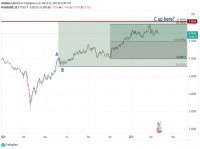|
The articles below are authored by the CTAs, who are responsible for content. iSTOXX® Efficient Capital®: Financial Markets Volatile with Trend Reversals
Ernest Jaffarian, founder of Efficient Capital, is one of the early managed futures
fund of fund programs with a focus on uncovering niche traders. With iSTOXX, Efficient Capital recently launched an investible managed futures index consisting of the largest 20 programs.
June was a negative month for the iSTOXX Efficient Capital Managed Futures 20 Index as 15 of the 20 constituent managers produced trading losses. Trend following programs struggled the most, generating an estimated -2.8% loss. Short term, FX and global macro managers also posted losses of approximately -1.5%, -1.0% and -0.4% respectively. Once again, the index's equal volatility adjusted weighting methodology added value in June. Financial markets were characterized by volatility and trend reversals as investors reacted to the FOMC signaling a quicker than previously anticipated end to their asset purchasing program. Equity markets had a difficult start but recovered most of their losses to close June slightly lower. Although bond markets continued to decline, the overall impact was greatly reduced as index managers decreased exposure to the fixed income sector. Currency markets also experienced sharp reversals as the US Dollar Index initially weakened significantly but subsequently recovered to end the month nearly unchanged. Commodity markets were led by activity in metals as gold closed its toughest quarter in recent history. Sharp drops in both precious and base metals prices provided trading opportunity across the different styles as profits in metals partially offset losses in other sectors. The index sponsor, STOXX Limited, Switzerland, does not promote any financial instruments which reference to the iSTOXX® Efficient Capital® Managed Futures 20 Index. The iSTOXX® Efficient Capital® Managed Futures 20 Index, developed in collaboration with Efficient Capital® Management, a leading investor in the Managed Futures space, represents the 20 largest Managed Futures Traders. Strict rules about minimum assets under management, existing track record and fee structure are applied to the initial universe of CTAs to ensure market representativeness. STOXX® independently constructs, calculates and publishes the index value on a daily basis, while Efficient Capital serves as a research partner. Sunrise Capital: The First Half Of 2013 Was A Time For Less Conventional CTA ApproachesThe first half of 2013 proved to be quite tricky for the CTA industry with the Barclay CTA Index down 0.62% (estimate as of July 8th) from January through the end of June. Similarly, other systematic macro indices have lagged far behind the S&P 500 and other traditional investment benchmarks. However as always, some intrepid CTAs have found ways to deliver compelling returns this year and they are doing so utilizing some unique approaches to systematic trading. 
Jason Gerlach is the managing partner of Sunrise, while founding partner Rick laughterruns research and partner Chris Stanton co-manages the portfolio with founding partner Gary Davis.
Like many CTAs, Sunrise found quite a bit of trouble in the "risk on/risk off" whipsaws of 2012. Despite this, Sunrise has rebounded nicely in 2013 and through the end of June, the firm's new Flagship Program known as Sunrise Evolution is up 14.0% on a net basis. What has been the key to Sunrise Evolution's success so far in 2013? Four trades discussed below shed some light on how markets have unfolded over the past six months and how Sunrise has attempted to capitalize on price patterns within these markets differently and, in some instances, more successfully than some of their peers. Moreover, as these four trades demonstrate, diversification remains a powerful defense for CTAs such as Sunrise against even the trickiest of market moves. The first example of one of Sunrise's successful 2013 trades stems from a new reality of the global economy: when China sneezes Australia gets a cold. Downbeat economic data out of China over the past few months has fueled speculation that the commodities super-cycle is slowing down. Combine this with China being Australia's largest trading partner and the outsize role natural resources have on Australian exports and we have a recipe for a sharp retrenchment in the Australian dollar. Indeed, from a high of over 104 in early April, the market has sharply collapsed down to 91 by the end of June and Sunrise has capitalized on this move. Generally speaking, trading algorithms that identify strong trend definitions were sure to spot the precipitous drop in the Australian dollar from early April to mid-May. Starting from mid-May through the end of June however, the pattern shifted from a rather linear descent to a slightly choppier "saw-toothed" decline that appeared to hurt some CTAs but fell right into one of several wheelhouses of the highly diversified Sunrise Evolution Program. As such, Sunrise was able to ably capture small pullbacks within the larger trend and thereby dampen the volatility that appeared to stymie more traditional trend following approaches. Another example of a successful 2013 Sunrise trade arises from the sharp gold reversal that has devastated the portfolios of many discretionary "gold bugs" and certain long term trend approaches to the commodity. From the doldrums of 2008, gold marched from $800 per ounce to what seemed to be continual new heights and hence, the "gold fever" that has characterized many investment approaches since the financial crisis. Then April happened. In two days gold dropped $200 per ounce. The suddenness of the move spooked market participants, leading all to search for reasons for the drop (ranging from inflation numbers to Cyprus' central bank selling its reserves) and many to flee the commodity altogether. However savvy CTAs such as Sunrise needed to look no further than the stair-step decline of gold that began in September 2012 to find a compelling justification for building a short position prior to gold's 2013 collapse. Indeed, a flexible, longer-looking component of the Sunrise Evolution Program was not deterred by gold's subsequent run-up of over $125 per ounce from the low towards the end of April. This proved to be extremely helpful for Sunrise as gold again drifted lower through May and into June and its systematic patience was rewarded on June 20 when gold dropped another $80 in one day, ultimately dropping below $1200 per ounce. Amazingly, two of the three biggest one-day dollar declines in gold in the past 35 years occurred during Q2 of this year. While most investors not only missed these shorting opportunities, but also lost significantly on existing long positions, several perceptive CTAs such as Sunrise nailed the short trades by employing flexible models that embrace the concept that under certain circumstances that investors may never understand, gold or any other market can fall even more rapidly than it has risen in recent years. A third component of Sunrise's successful 2013 worth examining is its trading approach to fixed income. Certainly one of the most compelling long term trends of the past several years has been the upward price march of bonds. The economic implosion of 2008 and a subsequent half decade of stimulus measures by the U.S. and many other governments have sent bond prices and interest rates to places few could have imagined. With economies around the globe showing signs of recovery, the million dollar question on everyone's mind in recent months was "when and how will the bond bull market end?" Every investor, CTAs included, seemed to have different answers to these questions and as demonstrated recently, a manager's returns over the past several months have been highly dependent upon the accuracy of those answers. Many investors, including many CTAs, held fast to massive long bond positions as 2012 turned to 2013 and have not been quick to unwind those positions, even as Bernanke's comments have spooked markets and strongly suggested that the end of the trend is neigh. However Sunrise, through the more diversified and dynamic approach of Sunrise Evolution, much earlier in 2013 began to not only aggressively unwind its long positions but also, take on short bond positions in some of its models. Therefore, when the bond tides really began to turn sharply in May and June and lengthy trends began to deteriorate across the entire yield curve, many firms were squarely in harm's way while others like Sunrise, were not. Much like gold, the end of the trend in bonds has been fast, violent and in many cases as harmful to investors as the preceding uptrend was helpful. CTAs like Sunrise with models that spotted the early stages of this violent downward price move in the months and weeks prior to the Bernanke comments of June 19 were well positioned to profit from the massive sell-off that ensued. CTAs and discretionary traders that did not pick up on these clues suffered mightily as evidenced by the top bond management funds which in many cases have just posted their worst quarters on record. In sum, it's clear that volatility has returned with a vengeance to the bond market and the operative question for any CTA going forward is how their models are calibrated to deal with this new fixed income reality. Lastly, it is worth examining equities, an area where, after enjoying profits from January through April, Sunrise took some lumps in May and June. Specifically, like most CTAs and most investors generally, Sunrise benefitted mightily from the raging bull equity market that originated a few years ago but truly launched in earnest with the turn of the calendar to 2013. Indeed, print a six-month, one-year, or two-year chart of the S&P and the trend is inescapable: up and to the right with a particularly strong burst in early 2013. With the S&P closing at an all-time high of 1669.16 on May 21 and many global equity markets following suit, both longer and shorter term aspects of Sunrise Evolution thrived on equities through the middle of May. Moreover, due to some unique innovations in their new flagship, Sunrise was at times better able to calibrate and focus its stock positions and when needed, de-couple U.S. markets from non-U.S. equity markets, which have at times demonstrated far less strength and far more volatility than their U.S. counterparts. In addition, certain components of Sunrise Evolution wisely pocketed much of the equity profits they had achieved in the earlier months of 2013 and thus as certain markets (particularly those in Asia and Australia) began to sharply retrace, Sunrise had much less to lose than many competing CTAs and did not appear to suffer as much damage as others from the volatility as Q2 unfolded. Since mid-May however, equities have presented challenges that have confounded even more diversified trading approaches such as that of Sunrise. The first trouble spot arose in Japan, when the Nikkei experienced intraday swings of over 1000 points two days in a row as the index ultimately fell 3000 points on the back of a rising yen and questions about the efficacy of "Abenomics." These moves went suddenly and swiftly against a well-established trend and invariably caused Sunrise and other CTAs to give up some of the gains they had made in earlier months. Next, questions about the health of the Chinese economy sparked concerns about global demand and negatively affected stock markets in East Asia and Australia-again bucking an established trend and forcing profit givebacks by CTAs such as Sunrise. Finally, the same June 19 Bernanke speech that spurred on the tremendous shorting opportunities in gold and fixed income shocked equity markets and drove them violently backward in such a way that losses were inevitable for just about any CTA approach, including that of Sunrise Evolution. The net result of all of this was a significant giveback in equities by Sunrise in both May and June. Yet despite this, Sunrise Evolution nonetheless found a way to record slight overall portfolio gains in both months. How was this so? The answer lies in the power of a diversified trading approach, an approach that in Sunrise's case allowed the firm to neatly offset all of its equity losses with big gains in other sectors and markets as highlighted by the trades discussed above. Therefore, in the case of CTAs such as Sunrise Capital Partners at least, the first six months of 2013 suggest that the winning strategy may be a more broadly diversified and more nimble trading approach that is not scared to take some profits and that even in the face of a few massive long term trends, keeps eggs spread across many baskets such that it is not as dangerously exposed to the damages that can come from sudden, violent reversals to such trends. Brandywine Asset Management: Buying when there's "Blood in the Streets"
Mike Dever, founder of Brandywine Asset Management, runs just under $100 million using a return driver based multi-strategy approach across a diversified portfolio of global financial and commodity markets.
In the book Jackass Investing, Mike Dever recounts the story of the siege of Paris in 1871 and the quote made famous at that time when Baron Rothschild told a new investor to "buy securities when there was blood in the streets." We've seen great investors do this time after time. They take advantage of investment opportunities that others are afraid to exploit. But the average person does just the opposite. We know this with certainty (the data is presented in Mr. Dever's book) and have based a number of Brandywine's sentiment trading strategies on this return driver. In those strategies Brandywine looks for extremes in market sentiment to take short-term trades opposite the crowd. We apply this approach to both financial (stock indexes, interest rates) and commodity markets. If you'd like to read the chapter where Mr. Dever discusses this (along with an actual trading strategy for trading stock indexes that is revealed in the book's Action Section), just follow this complimentary link: http://bit.ly/oDQYX8. The same opportunity can also present itself when evaluating a manager with which to invest. Every investment manager has periods where they outperform and underperform their expected returns. Those managers with less-diversified portfolios tend to have more extreme performances, while those trading more diversified portfolios may have less extreme variations in performance. In the case of Brandywine's Symphony program, our broad strategy and market diversification has resulted in performance volatility of less than half that of the S&P 500. At the same time we are targeting returns of 12% annually, which is in excess of those to be expected by buying and holding stocks (of course we must remind you that past performance is not indicative of future performance). But even with a low volatility of returns, Brandywine will regularly incur losing periods. The past three months have been one such period. After reaching new performance highs at the end of March, Brandywine's Symphony program dropped -4.63% in the 2nd quarter. A drawdown of this moderate size is expected to occur at least once each year. So the question is what to expect going forward. Using history as our guide, we see that similar losing periods are followed, on average, by a positive return of more than 18% (net to our investors) over the subsequent 12 months. (Past performance is not indicative of future results.) Our current drawdown may be a great opportunity to start your investment with Brandywine. In addition to performance, if you have an equity-dependent portfolio, an investment with Brandywine provides tremendous portfolio diversification. The correlation between Brandywine's Symphony program and the S&P 500 is a (negative) -0.02. Also, despite the strong rally in stocks and the recent decline by Brandywine, over the past two years the aggressively-traded Brandywine Symphony Preferred Fund has outperformed the S&P 500 (a +17.25% annualized return for Brandywine vs. a +12.77% return for the S&P 500 total return index. If you are prepared to take an analytical-rather than emotional-approach to investing, please call us to discuss how an investment with Brandywine can improve your portfolio's overall returns and reduce your risk. The time to diversify is now, not after stocks suffer a decline. Performance Attribution Brandywine's 2nd quarter drawdown (totaling 4.6%) was primarily the result of losses from Brandywine's arbitrage-based trading strategies in the currency and interest rate markets. As the popular carry trade in the yen unwound, this had a ripple effect that produced losses in Brandywine's Yen, Australian Dollar and Mexican Peso positions. Similarly, the rise in U.S. interest rates associated with the talk of ‘tapering' the Fed's purchases of debt, shifted the yield curves being traded by Brandywine, resulting in losses on its interest rate positions. Profits and losses in the remainder of Brandywine's portfolio were in balance. While there were slight losses from trend trades, these were offset by profits generated from ‘event-based' trades in the interest rate and currency markets following the release of the employment report in May, and an old crop-new crop soybean spread in June. To view a recent article written by Mr. Dever, : click here Because we reference historical tested performance in this report, the following disclaimer is required: HYPOTHETICAL PERFORMANCE RESULTS HAVE MANY INHERENT LIMITATIONS, SOME OF WHICH ARE DESCRIBED BELOW. NO REPRESENTATION IS BEING MADE THAT ANY ACCOUNT WILL OR IS LIKELY TO ACHIEVE PROFITS OR LOSSES SIMILAR TO THOSE SHOWN. IN FACT, THERE ARE FREQUENTLY SHARP DIFFERENCES BETWEEN HYPOTHETICAL PERFORMANCE RESULTS AND THE ACTUAL RESULTS ACHIEVED BY ANY PARTICULAR TRADING PROGRAM. (1) Since the start of trading in Brandywine's Symphony program in July 2011.
|
|
This article was published in Opalesque Futures Intelligence.
|





 RSS
RSS









